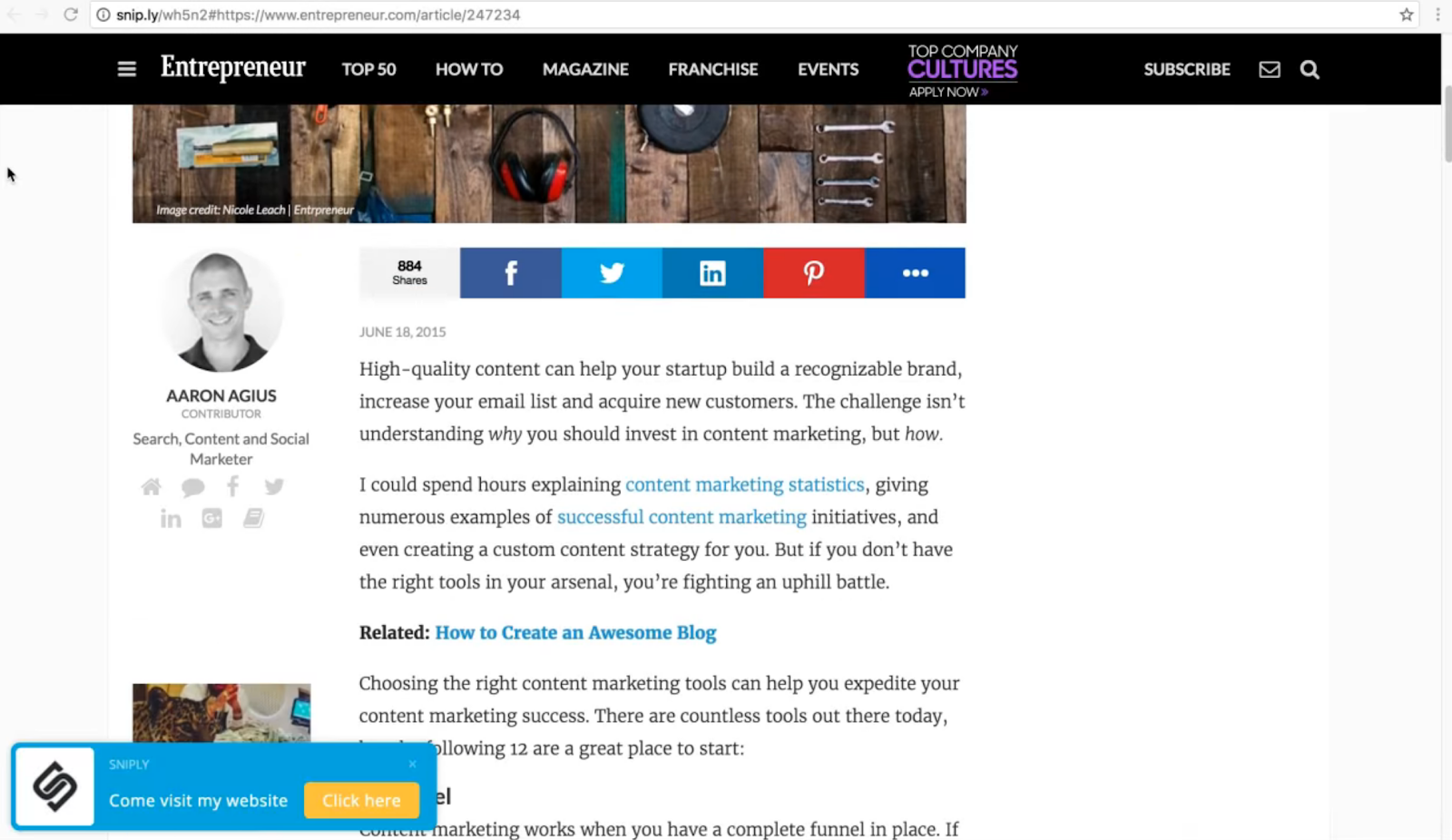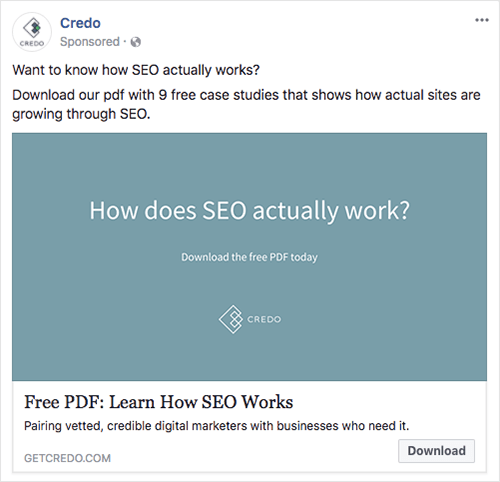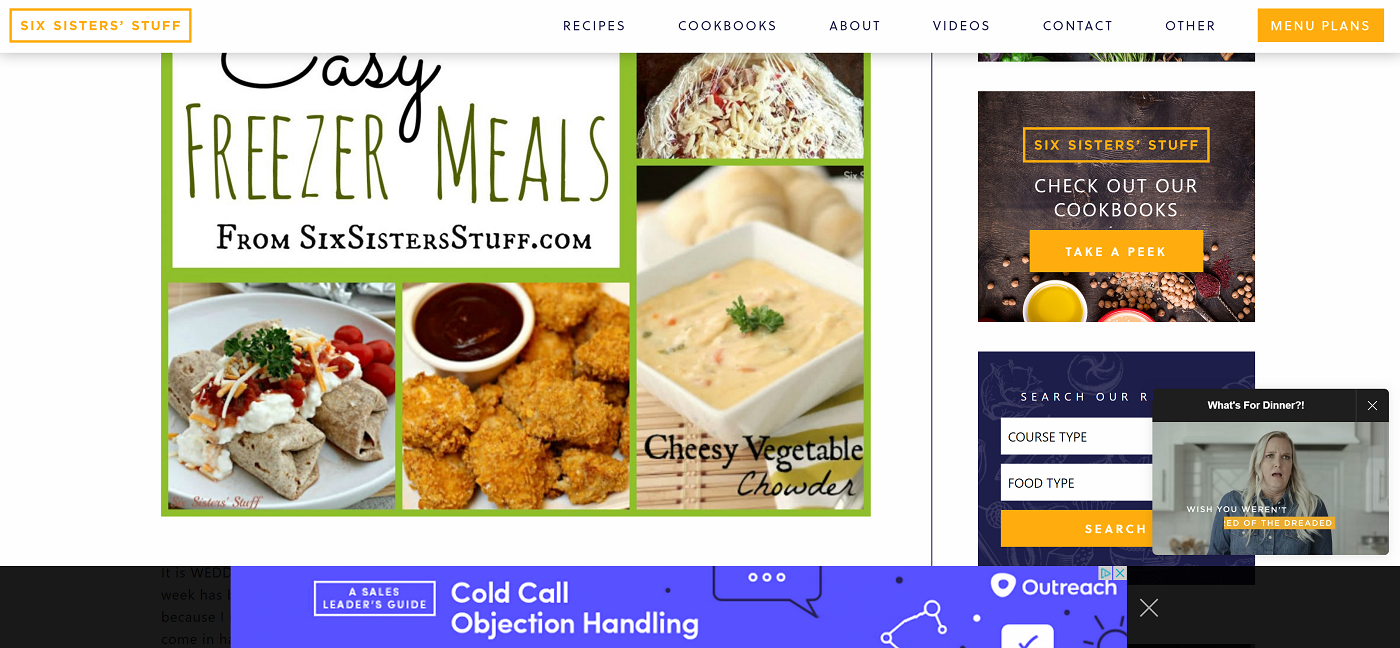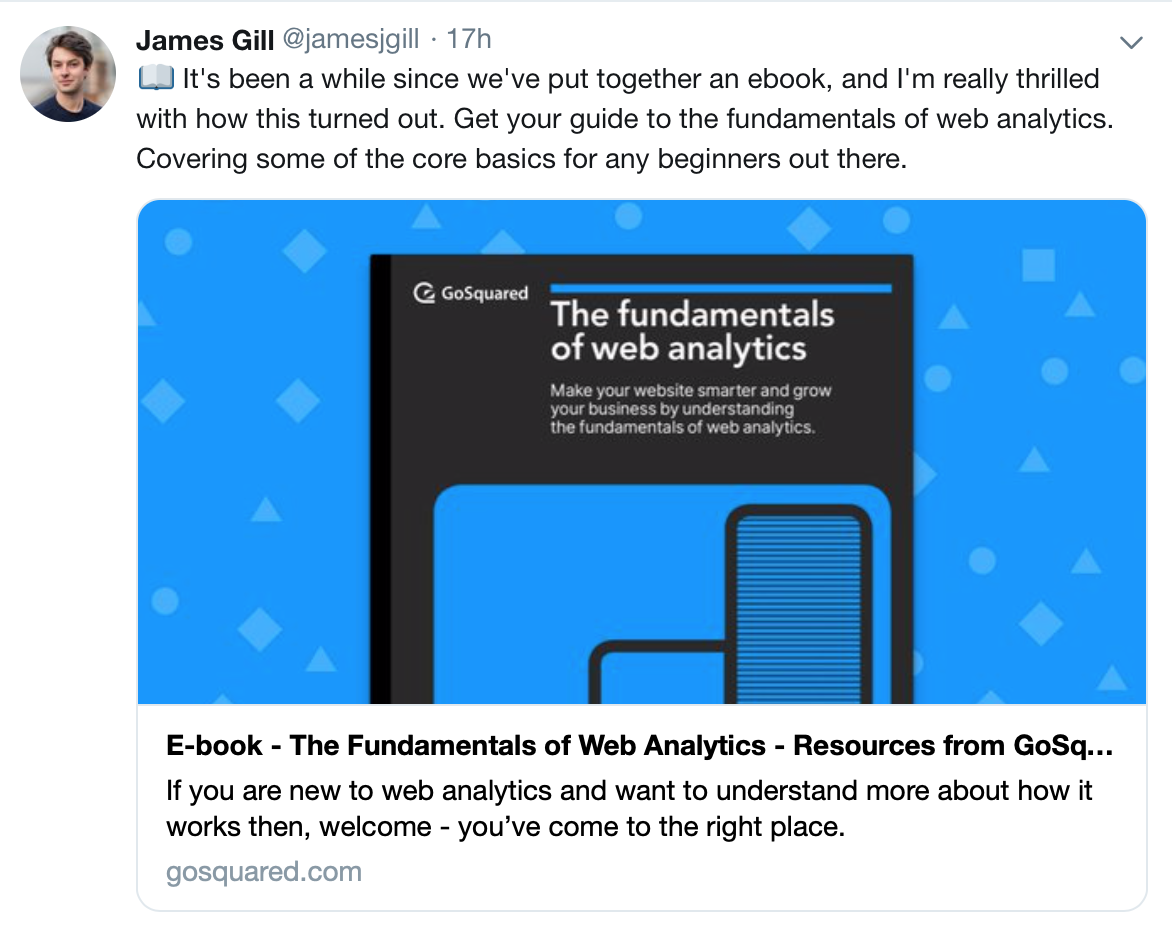
You know how essential it is to promote your content. You’re also well aware that you’re not doing enough of it. But every time you come across blog posts and tutorials on how to promote your content, it’s all just too overwhelming.
Too many tips, too many strategies. Too much to do.
That’s why we’ve broken up our comprehensive list into subcategories, so you can quickly choose which tools and tactics are the right fit for you and your business. Better content promotion means more website visitors and more chances of turning all of these visitors into customers.
At GoSquared, we make a range of tools that help you grow your business online, but that’s only helpful when you’ve got a growing stream of customers already coming to your site. So let’s get started.
If you want to track how your content promotion is impacting your web traffic you can use our free analytics tool – we designed it for exactly this purpose. Clean, easy to understand data, that you can act on.
In this post, we’re covering:
- Free or affordable content promotion tools
- Paid content promotion
- Simple and easy content promotion tasks
- More intensive content promotion tactics
How to use tools and tactics that follow your content promotion plan

Before we dive into our categories of free, paid, simple and intensive content promotion tools and tasks, let’s take a brief pause to review the basics of content promotion.
Your content promotion must:
- Fall in line with your overall content marketing strategy.
- Be targeted toward an audience subset, such as a certain demographic, an interest-based audience or a character persona.
- Lead your content creation (not fall behind). Essentially, content promotion isn’t something you slap at the end of writing a piece of content. Instead, you should be actively creating content that meets the needs of your customers, social media followers and online communities.
- Suit your business and your culture. Very few businesses will want to (or need to) use all of these tools and tactics. There’s a variety for a reason – you need to pick what’s right for your company and your audience.
Now that we’re all on the same page, let’s dive into our categories!
Free or affordable content promotion tools

There are tons of free content promotion tools. Let’s take a look at the tools you can use that are either free or reasonably affordable for most businesses.
1. Triberr
Triberr is an easy way to build up a community of bloggers or publishers in your niche so you can share each others’ content. All you need to do is join a tribe creating content around the same topics as you and then import your RSS feed from your blog so your new tribe can share your content while you share yours. Not really aimed at B2B audiences, Triberr is best for ecommerce companies, bloggers and course creators.
Pricing: free for most needs
2. MavSocial

MavSocial has tons of features that can help you grow and analyze your social media audience. But they also have something that most social media tools don’t: the ability to repeat your social media posts. Especially on Twitter, the likelihood of someone seeing your post twice is very low. So for evergreen content, you can share it once a month or once a week if you’d like.
Pricing: $16/month for the lowest tier plan.
3. Buffer

With Buffer’s free plan, you can post to 3 social media accounts and load up to 10 pre-scheduled posts per account. For some small businesses this is sufficient. You won’t be able to set your evergreen posts on repeat, but you will be able to pre-schedule your social media content for free, so that you promote it even when you’re busy doing something else.
4. Sumo
Adding social media sharing buttons to your content is a really smart way to supercharge your promotion. This way, you encourage more sharing and make it easy for people to share it as soon as they read it. Sumo’s free version lets you add sharing buttons to your site, and also email opt-in forms to grow your email list.
Pricing: Free for the beginner plan
5. StoryChief

StoryChief is a simple but powerful tool for content promotion and distribution. You can push to your blog, Medium, your email list, all of your social media channels and do email outreach all from one place. With dozens of integrations, StoryChief is like a content promotion control board.
Pricing: $10/month for the Essential plan
6. Sniply

With evergreen content or content that captures leads, it’s essential that you keep promoting these pieces until they are no longer relevant. You could promote them for one year, two years, maybe more. Sniply can help you promote these super-important lead magnets alongside your content curation. Meaning: every time you share a link to content that isn’t yours, you can have a small pop-up on the bottom that drives traffic to your evergreen guide or lead magnet landing page. Brilliant!
Price: $29/mo for the lowest tier plan
Paid content promotion

Promoting content is monstrously time-consuming. So why not pay someone (or something) else to promote it for you? Let’s take a look at your options for paid content promotion. Get excited, because many of these are way cheaper than you might think.
7. Taboola

You know those really strange sponsored blog posts at the bottom of websites like Huffington Post? Chances are that many of them are running through Taboola, a company which lets publishers and content marketers pay to get their content featured on major websites and target audiences based on their interests.
Side note: I recently set up a SEP-IRA retirement account, so apparently Taboola thinks I’m an elderly person with bowel issues.
Pricing: Depends on your budget and CPC
8. Outbrain
Similar to Taboola, Outbrain helps digital publishers and content marketers promote their articles on major external sites. Their feature sets are very similar, so if you’re considering this method, you can both platforms out and see which yields better results.
Pricing: Depends on your budget and CPC
9. Quuu Promote

QuuuPromote is really awesome. Here’s how it works: people who want to keep their social media accounts active sign up for Quuu so they can get suggested content to share that fits with their interests. Anything they approve to be shared can get shared immediately or sync to their social media scheduling tool to be shared later and fill their queue (now you get the name). Content marketers can pay to get content shared with the right Quuu users, and it’s up to the users if they actually share or not.
Pricing: $25 per promotion
10. Facebook Ads and Post Boosting

Surely you know what Facebook ads are, right? Of course you do. For ecommerce businesses, they can get success running their ads straight to their product. But for B2B companies or course creators, they need to run their ads to a lead magnet, so they capture those leads. That’s why SalesForce is running an ad to a guide in this example. For your evergreen content and lead magnets, this can work well. You can run the promotion to new traffic or to those who have already liked your page.
Pricing: Depends on your budget and CPC.
11. Google Search Ads
While Google Search ads (targeting certain search terms) are typically used to send traffic directly to a landing page, in the hopes that the searcher makes an immediate purchase, they can also be used to send traffic to content. For best results, these ads should only be used when promoting lead magnets that capture leads, not top-of-funnel blog content.
Pricing: Depends on your budget and CPC.
12. Google Display Ads

You can also use Google Display ads to promote your content across the web, like this example of Outreach promoting a guide to handling objections during cold calls.
Pricing: Depends on your budget and CPC.
13. LinkedIn Ads

Very rarely do LinkedIn ads go straight to the bottom of the funnel (a purchase or sign up page). Most often they go to content. Similar to Google ads, you’ll get the best results when sending ad traffic to lead magnets that capture email addresses, but you can also use LinkedIn to promote top-of-funnel content if you have a large enough budget to invest in high level brand awareness.
Pricing: Depends on your budget and CPC.
14. Paid influencer marketing
We tend to think of influencer marketing as only for physical products. But it can be utilised for content promotion as well. You can pay influencers to share your content on social media, with their email lists, or even in their Facebook groups.
Simple and easy content promotion tasks

So, what else can you do to promote your content? What are the simple things you can do right now—today—regardless of your budget or your tech stack? Glad you asked.
15. Sending content to your email list

If you’ve been optimising the middle of your funnel, you should have an active email list of subscribers (some customers, and some who are not yet paying customers). When you’ve created a piece of content that can help them, share it right away with your email list, like this example from InvisionApp.
16. Emailing (personally) to colleagues, friends, etc.
Especially when you’re just getting started with content marketing, you can (and should) share it directly with people you know. “Look mum, I’m famous!” can be the subject line. Just kidding. Sort of.
Share it with people in your circle who will benefit from it and can share it on social media to reach your target audience.
17. Setting up social media posts to share the content over time
As mentioned above with the MavSocial and Buffer tool recommendations, sharing your content on social media is essential. But it’s easy to fall in the trap of “share it and forget it.” Instead of sharing it just the first week, share it as long as it’s relevant. Schedule posts far out now, so you don’t forget later.
18. Add new or top content to your email signature
You can add brand new content to your email signature. Or use your email signature to promote an important piece of content for several months. Right below your name and title, write something like “Grab my guide to SaaS metrics that impact revenue.” For larger companies, a tool like Sigstr can make this easy to roll out across all employee signatures.
More intensive content promotion tactics

You’ve learned about the free tools, the paid promotion sites and the quick and easy tasks. Let’s move on to the tasks that are a bit more time intensive.
19. Mastering Reddit

Reddit is the rabbit hole of the internet.
The textbook definition: Reddit is a social news aggregation, web content rating and discussion website. You can share your content by copying it into Reddit directly and including a link back to the original piece, or by summarizing the content (the tl;dr version) and linking to it.
Whatever you do, don’t just drop a link. You need to have some robust text so that the discussion can happen in Reddit and folks don’t necessarily have to go to your site for the full version to take part in the discussion.
20. SEO-focused content creation
Ok, this is more on the content creation side than the promotion side, but still—we’d be remiss not to mention SEO. Ranking in search is absolutely an element of promotion though, because it can bring you traffic overtime. Front load this effort by targeting certain keyphrases. The next task will help too.
21. Outreach for backlinks and social sharing
Cold outreach (or warm outreach to colleagues and contacts) can help you generate backlinks and drive more social media shares. With request backlinks, you’ll have more success if you suggest which post the email recipient should link to your content from.
For example, if they’ve written a post on one aspect of automated testing, you could suggest that they link to your guide on automated testing from that post. Tools like Ahrefs and Buzzstream can help you find and manage these opportunities.
22. Answering questions on Quora

Quora is a great place for content promotion. Don’t be spammy and randomly drop links to your content everywhere. Instead, write a thoughtful answer and link to your content in a natural way. With Buzzsumo (mentioned above) you can make it easier to find the best, most relevant questions to answer.
23. Create an alternate version of the content for Medium and/or LinkedIn
You can either publish your content directly to Medium or LinkedIn (if you’re not worried about duplicate content), or better yet, you can create a shorter or otherwise different version of the content and then link back to your original. Keep in mind that to be effective, you’ll also need to network and build a community on these platforms.
24. Build relationships with fellow content marketing managers, social media managers and entrepreneurs
In addition to joining Triberr, you can also build mutual content sharing relationships with other people in a more direct, organic way. Simply reach out to people with your target audience (who are not direct competitors) and discuss swapping guest posts or sharing each others’ content on social media a few times a month.
Whether you’re an entrepreneur building relationships with other entrepreneurs or a content marketing manager cozying up to other content marketing managers, this can work extraordinarily well.
25. Employee advocacy (that’s fancy talk for encouraging employees to share content on social)

And lastly, get your team to share your content on social media! Your company culture is the #1 thing that makes employees more likely to share. If they believe in the mission and love working with you, they may share without being asked. Even still, you may want to track and manage your employee advocacy efforts. Tools like Hootsuite Amplify or ClearView Social are perfect for bigger teams.
Yes, content promotion is an enormous, complex task. We hope that by breaking it up into categories of time and price commitments that we’ve made it much easier for you to choose the right tools and tactics and take action.
If you want to learn more about how to get closer to your customers and growing your business online, take a look at GoSquared Analytics. Try it totally free for 14 days, no credit card required.

